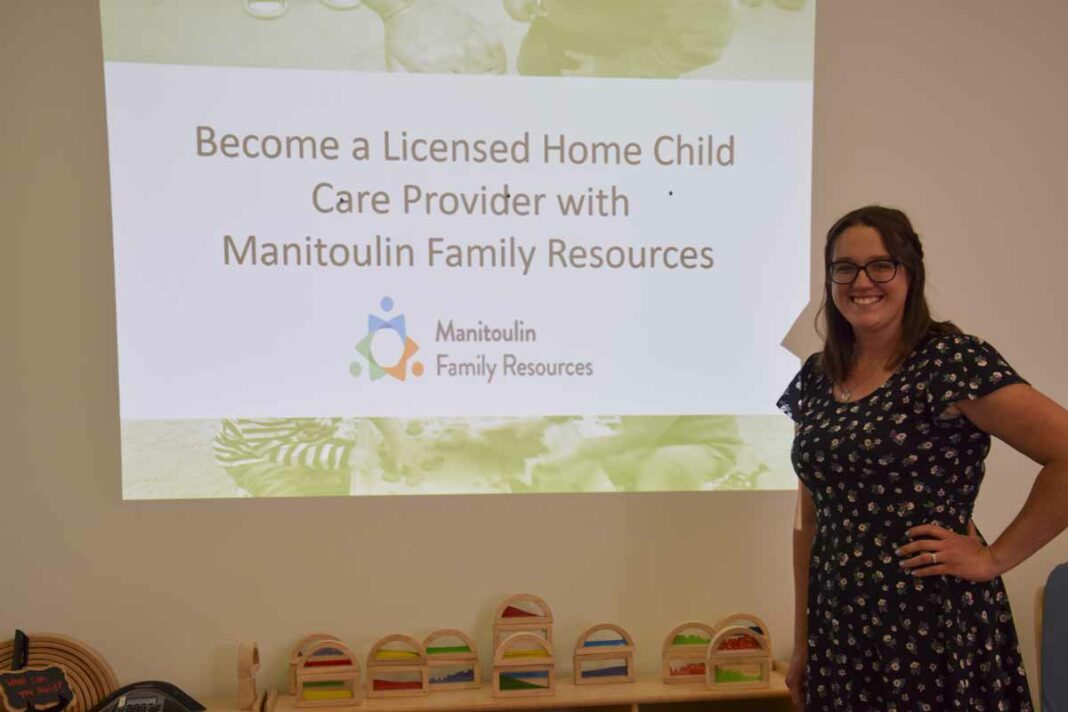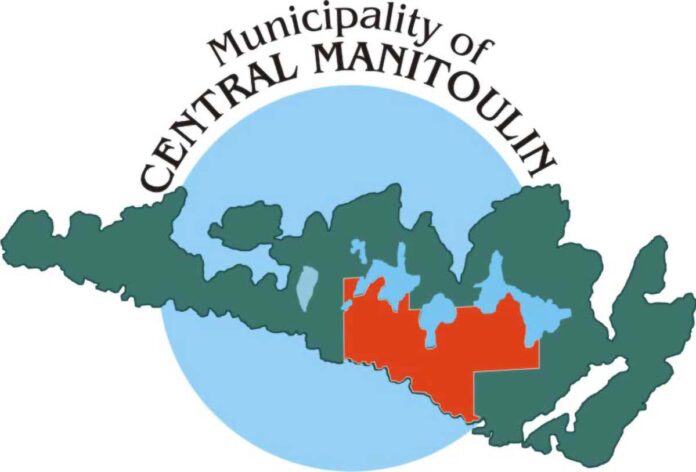LITTLE CURRENT—Manitoulin Family Resources (MFR) is offering a series of information sessions for those interested in learning more about what is involved in becoming a home childcare provider. With the advent of the federal $10-a-day daycare and a burgeoning demand for spaces that is outstripping supply, Home Daycare Supervisor Patricia Hurst said the time has never been better for interested individuals to enter the field. “It’s easier than you think to become a licenced home childcare provider,” she assured The Expositor. “I will support you along the way.”
When a home daycare provider enters the field and become “licenced,” they will find themselves part of a support system that brings huge benefits, benefits that include support from MFR, free training in CPR, anaphylaxis, food handling certification courses and a host of professional development opportunities.
Add to that the generous remuneration (with no worries regarding fee collection that afflict unlicenced providers) where the provider receives the full fee collected from the parent, pedological supports (early education mentorship), a partnership with the popular EarlyON centres and policies and procedures that protect the home childcare provider, providing peace of mind.
Ms. Hurst outlined the further advantages of taking up a career providing home daycare, including: flexible hours of care and flexible daily schedule; access to subsidized childcare spaces; referrals for child development; reduced rates through the Canada Wide Early Learning Child Care Plan (the federal $10-a-day daycare plan, currently $12.50); peace of mind (for both parent and provider) knowing the home is regulated; alternate care for sick and vacation time (allowing operators the ability to take down time without fear of lost income); screened, nurturing caregivers that are found in your home and school neighborhood; convenient, comfortable small group home settings that are less “institutional” for the children; professional support for families in selecting and using a home child care program; siblings can be together (given the small one-room schoolhouse type of setting); a small number of children allowing for greater personal attention and care; home providers use the Early Learning Framework as a guide to practice; as well as observations and documentation is used to help support curriculum planning that is meaningful to the individual needs of each child.
Now there are some caveats—first and foremost a clear vulnerable sector check for the potential provider and anyone living in the home over 18 years of age must be secured; the premises must be smoke free 100 percent of the time; all family members and pets must have up-to-date immunizations; standard First Aid Level C CPR and AED (that’s automated external defibrillator, including for infant/child); house insurance which covers the home-based business; vehicle insurance which covers children in care (if the provider will be transporting children); the provider must adhere to Child Care and Early Years Act regulations set out by the Ministry of Education; and compliance with fire and health inspections.
Ms. Hurst assured attendees at the first session held in the Little Current EarlyON centre that the process is much simpler than it might seem at first blush, with MFR providing guidance and support throughout the process.
The first step in that process is to fill out a provider application. That application provides information on starting and operating a home-based childcare program, lets MFR know a little bit more about the applicant and answers some of the questions an applicant might have.
Once the application has been received, a three-step approval process gets underway. That includes three visits. At the first visit MFR will review approval requirements with the applicant and complete a “premise evaluation.” There will also be a review of some policies and procedures, as well as reviewing what must be completed prior to fire/health inspections.
In the second visit, a discussion of sample menus, daily routine and age-appropriate activities are gone over, as well as an outline of equipment lending (MFR will provide much, if not all, of what is needed in that regard). The visit will go over cleaning/sanitizing policies and provide sample schedules for operation of the home and review fire and health inspection reports. A bulletin board will also be provided (depending on availability).
On the third visit, the Child Care and Early Years Act will be reviewed as will the Caregiver Handbook.
Then it is paperwork time, with the signing of both the provider agreement and agency policies and procedures before it’s off to the races with the provision of a Home Approval Certificate and Approved by a Licenced Home Child Care Agency Signage.
Ms. Hurst explained that licenced home child care providers may care for no more than six children under 13 years of age; may have no more than three children under two years of age (noting that a provider’s own children under four years of age must count in those numbers, although they do not need to count their school age child that may be home sick for the day; and, of course, the provider must be regulated by a licenced home child care agency.
She also noted that an unlicenced home childcare provider may legally care for no more than five children under 13 years of age (similarly a provider’s own children under four years of age must count in their numbers), an unlicenced provider must inform parents that they are, indeed, unlicenced and that must be done in writing (either hard-copy or electronic). All providers are also required to provide receipts for payment of services upon request. An unlicensed provider cannot operate in more than one location (whereas a licenced provider could move locations, say to a summer camp). Also, the unlicenced provider does not have the peace of mind and security (for both parent and provider) of being regulated by a third party.
Cutting to the chase, the gig has some sweet financial benefits as well. A sample of current rates include: $39.30 full day care (five to nine hours); $30.30 for a half day (up to four hours); and $17.40 for before and after school care (up to 2.5 hours); $10.80 for after school care (up to 2.5 hours) and $7.75 for before school care (up to 2.5 hours). The numbers add up even more for overnight care, $63.15 (13 or more hours), and no, you don’t have to stay up all night, or extended daycare, $49.90 (nine to 13 hours).
Sessions were held in Little Current on June 6 and in Mindemoya on June 13, with a future session slated for 6 pm, Thursday, June 15 at 134 Michael’s Bay Road in Manitowaning.
For more information on how to become a licenced home childcare provider, contact Ms. Hurst at (705) 368-3400 extension 235. Ms. Hurst’s office is located in the EarlyON Centre located at 9050 Highway 6 in Little Current.





